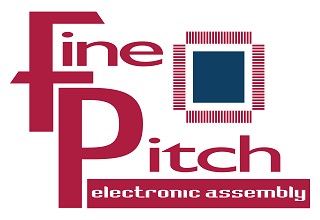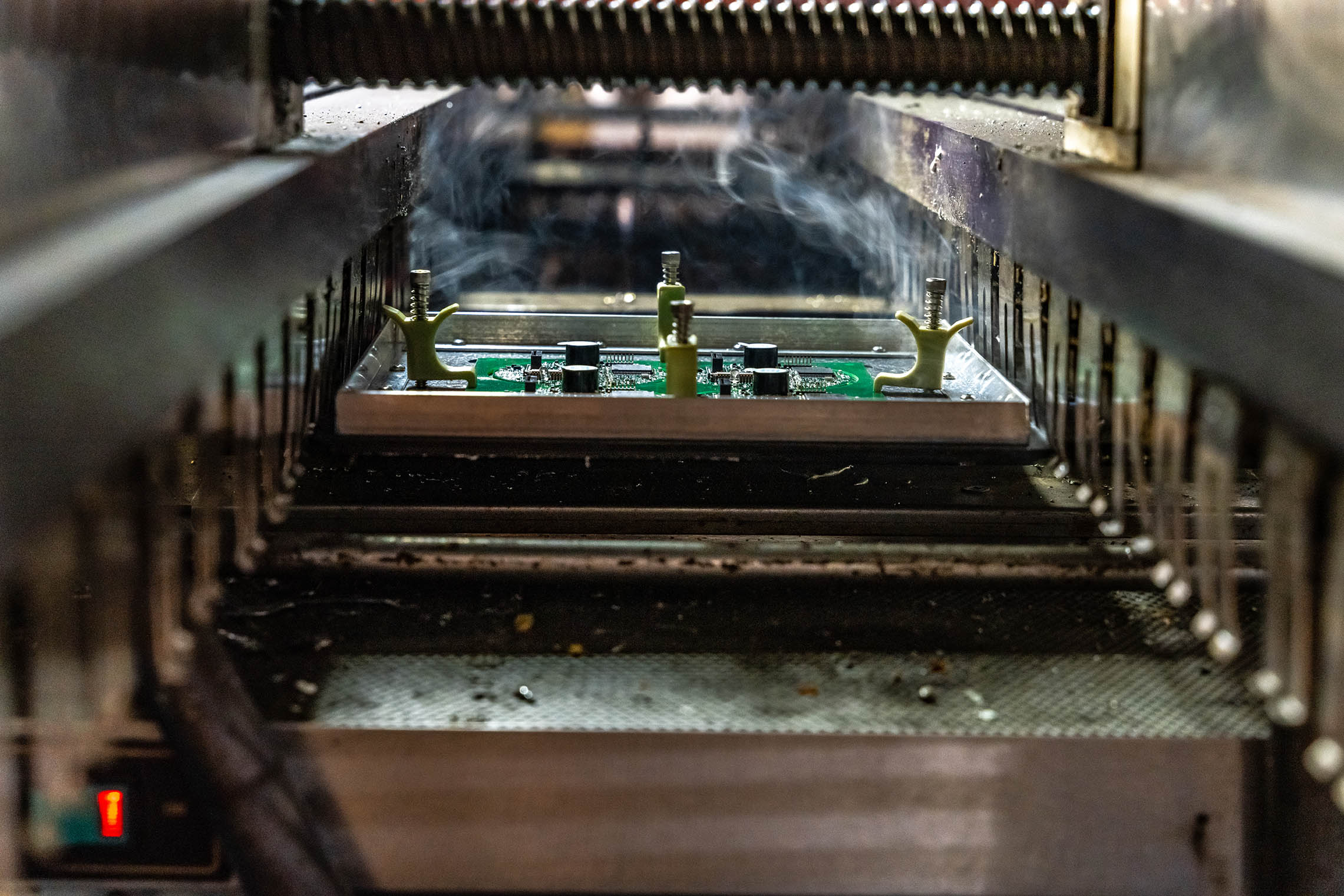- admin
- January 2021
- PCB
Fine Pitch Electronic Assembly is equipped with one of the top soldering specialist Seho Reflow Oven capable of running 24/7.
In table 2 typical parameters for reflow soldering, again adapted to the different solder alloys, are shown.
| Parameter melting point | SnPb-alloys 183°C |
Bi-alloys 138°C |
Sn-alloys 217-230°C |
| Conveyor speed | 90cm/min. | 90cm/min. | 70-80cm/min. |
| Peak temperature | 215-255°C | 190-200°C | Melting point + approx. 30-40K (i.e. 245-260°C) |
| Time above liquidus | 40-60 sec. | 40-60 sec. | 60-80 sec. |
| Time above glass transition temperature Tg of the laminate | <120 sec. | <80-100 sec. | <80-100 sec. as new laminates will perform a higher Tg (e.g. HiTemp FR4 Tg=170°C) |
| Max. temperature gradient | 0.5-2.0K/sec. | 0.5-2.0K/sec. | 0.5-2.0K/sec. |
| Plateau temperature | 160°C* | 120°C* | Recommendable: 245-260°C minus 60K = 185-200°C. Realistic: 160°C** |
| Cooling rate | Approx. 3K/sec. | Approx. 3K/sec. | Approx. 3K/sec. |
| Nitrogen | -for best possible wetting | -for best possible wetting | -for best possible wetting |
*as close as possible to the melting point of the solder, however not so high that the activators of the paste will react prematurely.
**the activators in the paste (di-carbon series of acids) disassociate at about 160°C and thus substantially lower than we would wish, i.e. at temperatures approx. 185-200°C. Profiles without plateau will become more general especially wherever either a better thermal design of the assembly or better equipment prevent the development of a major ΔT.
Hi-melting pastes will narrow down to the two families SnAg+X and SnAgCu+X as the melting point of SnCu+X will be considered too high. Their thermal process profiles will shift to higher temperatures (see table 2 above – reflow soldering profile for hi-melting solder pastes).
The peak temperature ranges at about melting point of the alloy plus 30-40 K, hence approx. 245-260°C. Peak temperature of about 235°C abound in the literature and they may be quite feasible under excellent nitrogen inertion. However, due to solderability problems encountered on components and boards and the general lack of good wetting properties for the lead-free alloys, we anticipate a slow adjustment of the peak temperatures in the area mentioned above.
Choosing the best plateau – temperature – as close as possible to the melting point of the solder (approx. 220°C), however not so high that the activators of the paste will react pre-maturely – most likely is one of the most difficult conditions to meet. The activators in the paste (Di-carbon series of acids) disassociate at about 160°C and thus substantially lower than we would wish, I. E. At temperatures of about 245 – 260°C minus 60 K = 185 – 200°C. Profiles without plateau will become more general especially wherever either a better thermal design of the assembly or better equipment prevent the development of a major ΔT. On the other hand, we do not yet have reliable information about the effect of an increased thickness of the intermetallic layer on the reliability of the lead-free joint. Thus we do not even know whether a large ΔT will have a negative impact on the reliability as in the case of SnPb. Perhaps we do not have to react to large ΔTs (except perhaps for components) as before and we might be able to use the pyramidical profile without paying the ΔT-price?




